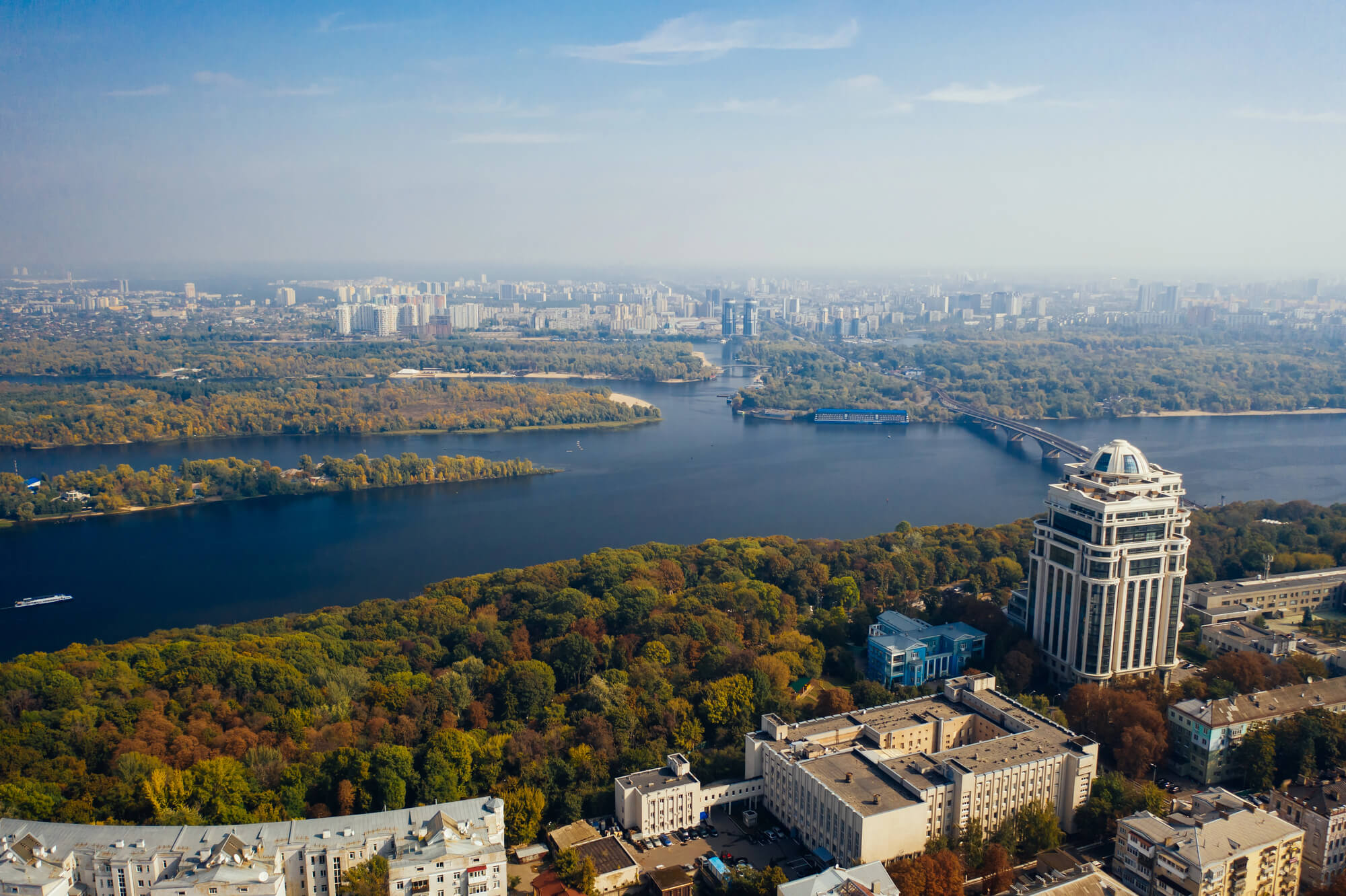Due to the war, there are significant risks in the agricultural sector for both business owners and workers, especially those working in areas close to the front line. However, despite the critical conditions, farmers continue to run their businesses, pay taxes, and create jobs.
On the most urgent problems of Ukrainian farmers
First of all, these are problems related to hostilities: shelling, destruction of infrastructure, and explosions during work. Russia is trying to target grain elevators and ports to inflict maximum damage on our economy, so these facilities need protection from shelling.
The second issue is the preservation of human resources. It is essential to ensure safe working conditions, as workers often become targets for the aggressor, especially in regions close to the front line.
The shortage of skilled personnel is also a significant problem. It existed even before the start of the full-scale war, but during the war, the shortage of staff has deepened, as only 50% of qualified personnel can be officially reserved.
Therefore, agricultural enterprises are looking for young people without qualifications who can work in the fields and are trying to involve more women. However, agrarian work is unattractive to young people who prefer to live in cities due to the availability of infrastructure and certain amenities that are lacking in villages. For women, intensive work during harvest, planting, and field processing can be difficult. During this period, work requires 24/7 involvement, which does not allow women to dedicate time to their families.
The key points of the podcast were compiled by Platon Soia, a Reform Index intern
On mutual support between farmers and the state
Funding for the sector is stable today, with various opportunities for obtaining loans. The government program “Affordable Loans 5–7–9” provided the necessary financial support in 2022, especially in the spring when food exports were almost halted. Later, bank lending resumed. Farmers are the best clients for banks because they are very disciplined and meet all creditor requirements.
There are state grant programs that assist agricultural producers, such as a program for reimbursement of equipment purchase costs, a demining compensation program, and an irrigation program. With the support of international donors, agricultural producers can receive grain storage bags. During times of grain surplus, when elevators are full, these bags help preserve the harvest for later sale.
The primary role of the state is to ensure a favorable investment and business climate. Currently, the government proposes tax increases. We understand the need to fill the country’s budget due to significant defense expenditures. Therefore, we have submitted to Parliament and discussed with MPs tax increase options that would satisfy both the state and businesses.
When farmers needed support in challenging times, the state provided it, for instance, through the “Affordable Loans 5–7–9” program. Now, businesses are ready to lend a hand to the state in return.
On cooperation with universities and workforce training
There is constant dialogue with universities: farmers submit requests for the training of specialists, and universities adapt their educational programs accordingly. Internships and training courses for students and graduates are organized in collaboration with businesses.
For instance, the “AgroKebety” educational program is being implemented jointly by universities and businesses. This innovative master’s program, created based on business requirements, prepares qualified personnel for the sector. Young people gain not only theoretical knowledge but also practical skills, as hands-on fieldwork experience is essential for agricultural professionals.
With the support of USAID’s AGRO, we are creating a training and practical center for workforce preparation in grain and oilseed processing enterprises. This program was initiated due to the shortage of skilled workers, as there is a deficit not only of tractor operators, machine operators, or agronomists but also of people who will work in processing and storage. We are ready to welcome individuals from other industries. One of the goals of this program is the retraining of workers as well as the upskilling of employees already engaged in the agricultural sector.
On the technological advancement of the agricultural sector
Some Ukrainian crop production companies are already able to share their experience with new technologies with foreign counterparts. Large companies that continuously invest in technology quickly implement innovations introduced abroad. It’s truly remarkable. Many companies establish and fund R&D centers where they test and refine new chemical products, seed materials, approaches, and technological advancements.
On organic farming
Organic farming can be quite profitable. The main challenge lies in properly managing organic production. It is a long-term process: certification must be obtained, and products must indeed be grown without using certain substances, with minimal processing. For instance, certain medicinal treatments cannot be used for livestock.
However, most of this produce is exported to the European market, where people are willing to pay more for organic products. For example, our berries sell very well abroad, with significant prospects in this area.
On soil condition and compliance with the EU’s “green” policies
No one can provide an objective assessment of the condition of Ukrainian soils, as no large-scale soil analysis has been conducted. Undoubtedly, landowners conduct spot surface analysis. They are interested in this because crop yield depends on soil quality.
In Europe, using certain types of fertilizers and some field treatment agents is prohibited. However, it is important to understand that farmers in the EU receive compensation—a specific amount per hectare—for not using these agents. Is Ukraine ready for such subsidization? The question remains open. Protests by farmers that have taken place in European countries were aimed at resolving issues related to the EU’s “Green Deal.” Farmers in Europe find it very difficult to comply with the requirements of the “Green Deal,” which include not using specific plant protection agents or pesticides and adhering to regulations regarding mineral fertilizers. Therefore, the EU’s green policy is currently being reviewed. This should be considered as Ukraine moves closer to the EU.
On climate issues and adaptation to change
Climate issues are actively discussed among farmers. Undeniably, warming leads to changes in strategies for growing various crops. For example, while the corn belt was previously primarily in the south—Mykolaiv and Odesa regions—it is now shifting northward, where corn also yields high results. Sometimes, wheat suffers from heat damage, as it requires cool, favorable weather.
Recently, there was an experiment that many people may have heard about. Cotton, which is exotic to Ukraine, was sown. Some are trying chickpeas, others lentils, as they seek to adapt. All new methods for cultivating exotic crops are tested in R&D centers. However, this is not a one-year endeavor, as each crop requires developing specific techniques, and specialists need to learn how to work with them. The introduction of new crops is only possible through trial and error.
On lifting the land sale moratorium
The topic of land reform has long been highly politicized. Various parties and deputies have consistently attempted to leverage this reform for political gain, leading to the proliferation of numerous myths (for instance, the myth that the land would be taken over by Chinese and Europeans, leaving peasants landless).
It’s important to understand that the law includes specific restrictions for legal entities. Firstly, a legal entity must be registered in Ukraine, and its ultimate beneficiary must be a Ukrainian citizen. Secondly, a single entity can acquire no more than 10,000 hectares of land. These conditions have limited the price increase following the permission for legal entities to enter the market (effective from January 1, 2024 – ed.). Many companies are refraining from purchasing land due to the ongoing war and are instead investing in other assets, such as updating equipment and replenishing inventory.
However, investments in land are promising, as the price has recently increased from UAH 37–39 thousand to UAH 43.5–44 thousand per hectare. A new class of rentiers is emerging—individuals who purchase land to lease it out. This can generate substantial income and is a long-term investment since the land is a permanent asset. Before the war, many companies had long-term strategies, as time was needed to implement many profitable projects.
When agricultural producers could only lease land, they were not motivated to make significant investments in it (such as fertilization and irrigation) because, after seven years, another tenant could take over and benefit from those investments. A free land market mitigates these risks, as farmers now have the option to choose: they can buy land, lease it, cultivate it themselves, or lease it out and receive passive income.
Land reform is a civilizational indicator that shows the direction of our development. The state, businesses, and people all benefit from this reform.
On exports and Polish protests
95% of our grain has always been exported to Asia or Africa. When Russia blocked maritime logistics routes, European solidarity routes became the only solution. When the full-scale invasion began, food prices on global markets sharply increased. Due to high prices, the Polish expected to gain windfall profits, and the Polish government supported these expectations. However, when our exports resumed, prices began to fall, and the Poles were dissatisfied that they could not achieve the anticipated profits. This led to the protests.
Poland’s problem also lies in its uncompetitive agricultural sector. The average farm in Poland is only 11 hectares, which cannot generate sufficient income. Even with European subsidies, a Polish farmer earns an average of USD 13-14 thousand per season, while the average monthly salary in Warsaw is EUR 3,500. To compete with other industries, farmers must cooperate with one another: only the consolidation of farms allows them to be financially sustainable.
There are various types of farms in Ukraine: small family farms, medium-sized farms, and large enterprises. There are no conflicts among farmers; all work in the same area for the benefit of local communities, striving to pay taxes and rent payments.
Photo: depositphotos.com/ua
Attention
The author doesn`t work for, consult to, own shares in or receive funding from any company or organization that would benefit from this article, and have no relevant affiliations




